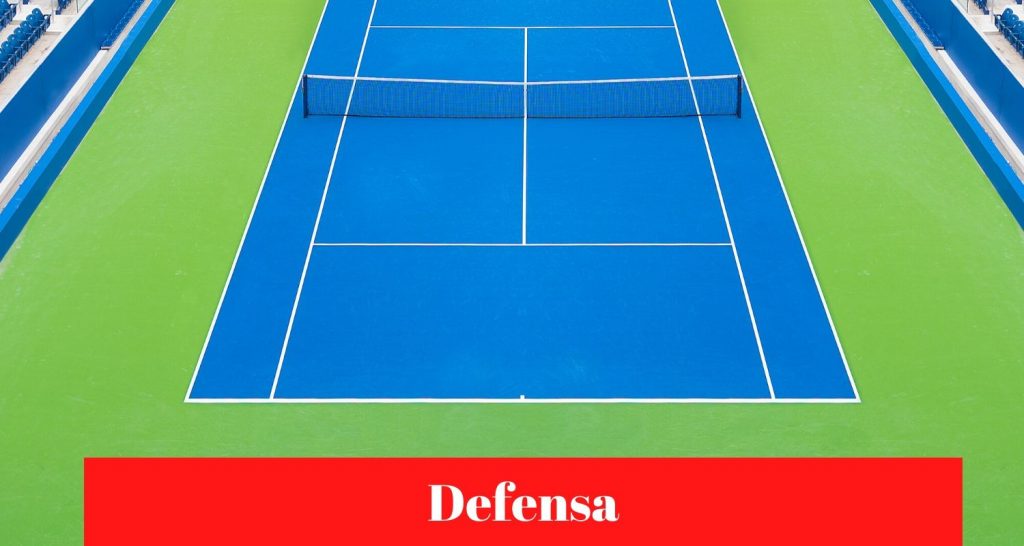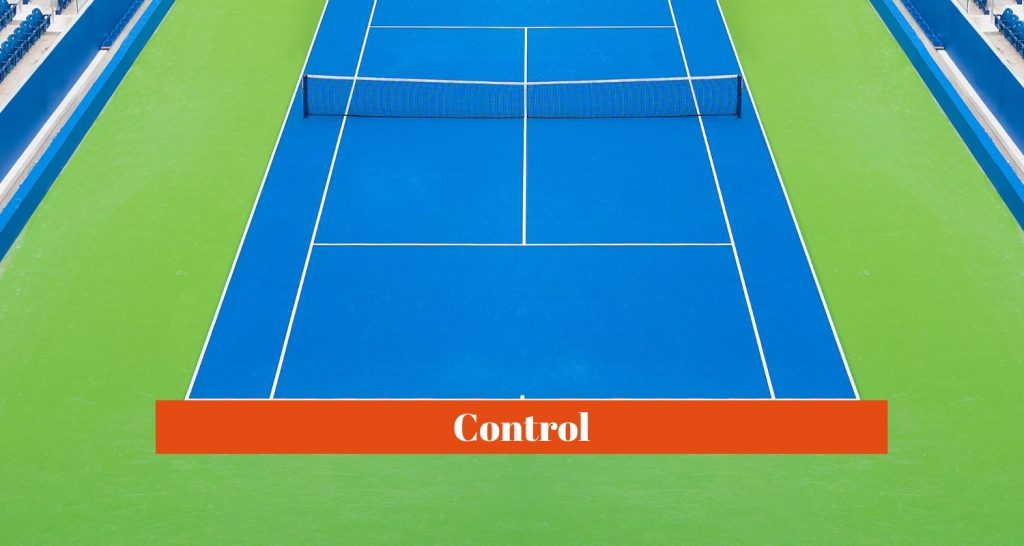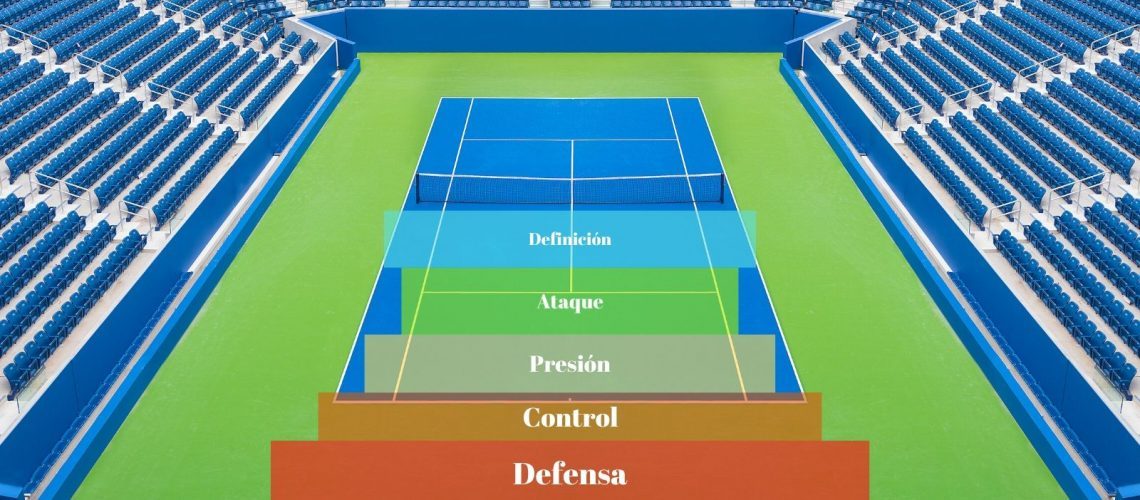In this informative article, as a prelude to more detailed ones, you will find the summarized scheme of the Court Zones. With these quick tips we will have a global vision of the areas that, later, we will analyze in detail. This study only covers a part of the zones (Defense, Control, Pressure, Attack, Definition) that have a close link with Your Center on the Court.
Tennis Court Zones

Defense
You should:
- Go back looking for adequate distance (or play live ball if technical mastery allows you).
- Load well behind the ball.
- Play with a margin over the net.
- Try to play deep.
- Choose crosscourt shots or the weak side of the opponent.
- Return to the control zone.
You should not:
- Hit the ball over the height of your shoulder.
- Play without loading behind the ball.
- Hit the ball straight with little margin (There may be exceptions).
- Play short.
- Play down the line (exception: weak side).
- Stay in the defense zone after you hit.

Control
You should:
- Play neutral balls or set-ups with margins.
- Build the play trying to gain position and maximize the opponent’s displacement.
- Be sharp to the possibilities of entering the pressure/attack zone.
- Choose shots that do not leave the opponent possibility of taking initiative.
- If you go back, recover the area as soon as possible.
- Try to cut angles to minimize displacement.
You should not:
- Play high risk or attack balls.
- Play without making sense of the shot, pushing it to the other side.
- Fall asleep and not grasp the options to take initiative in time.
- Leave the opponent the opportunities to pressure you.
- Lose ground and stay in the defense zone.
- Lose the possibility to cut corners when you get the chance.

Pressure
You should:
- Be attentive to take advantage of every inch to gain space.
- Remember that the Pressure Zone coincides with the Dead Zone. After the shot go ahead or go back to the control zone.
- Keep in mind the meaning of the PRESSURE Zone – transition: place the ball well by pressing with margin.
- Look for the initiative.
- If it’s a high ball, look for the attack.
- If it is a low ball, place it and gain more space.
You should not:
- Lose option to gain space and time.
- Stay in the Dead Zone after the shot.
- Take a risk trying to close the point with low percentage shots.
- Push the ball and losing initiative.
- Let the ball drop when you can hit it over the level of the net.
- Look for a winner when the ball is under the net.

Attack
You should:
- If you are in a good position, close with a winner.
- If the ball is under the net, or you are in an awkward position, remember to play two-shot patterns instead of trying to close with one.
- On low balls, you have the option of drop-shots.
- Choose the approach shots in most cases down the line.
- Preferable that your approach shot is a low ball and does not rise too much so as not to leave a good angle to the opponent.
- Once in the attack zone, there is no place for defense. The best defense will be an attack. You cannot go back, except in the case of a lob or passing shot.
You should not:
- Lose the advantage of the initiative and stop pressing.
- Trying to make winners out of awkward situations.
- Make a drop shot from a high ball.
- Approach with crosscourt shots, unless doing a lot of damage with it.
- Make an approach with a ball that bounces high, leaving a margin of angle to the opponent.
- Go back and execute defensive blows.

Definición
You should:
- Search for the volley preferably above the net.
- Search split-step differentiating the first and second volley areas.
- Find center (cover down the line).
- On low ball continue with the idea of the two-shot play.
- Dropouts and short crosscourt are current options.
- Be as simple and blunt as possible.
You should not:
- Drop the ball below the net if you can play it over.
- Stand still, far away, or get too close to the net.
- Lose the proper center.
- Choose high-risk shots on balls under the net.
- Pull without angle and placement.
- Try “pretty” shots of little effectiveness, or relax.
In the next articles, we will explain the concept of zones in more detail. We will review concepts such as the Dead Zone, we will talk about the horizontally oriented areas (Scopes) and the Creative Zone. I would also advise you to review the articles “Your Center on the Court” and “Three Points of Vision“.









